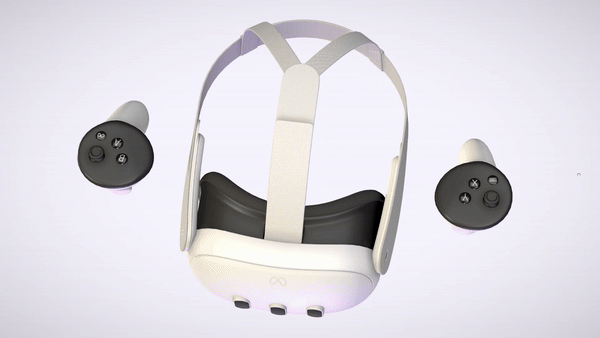What the Metaverse really is
The metaverse is a term used to describe a variety of virtual and augmented reality experiences, but what does it really mean? And what are the implications of creating and inhabiting such a digital world?
�
According to some definitions, the metaverse is a shared, persistent, and interactive virtual environment that spans multiple platforms, where people can create, socialise, work, learn, play, and consume content. The metaverse is not a single application or platform, but rather a network of interconnected virtual spaces that can be accessed through different interfaces and devices.
�
Some of the key features of the metaverse are:
�
– Immersion: Aims to provide a high level of immersion and presence for its users, using technologies such as virtual reality (VR), augmented reality (AR), mixed reality (MR), haptic feedback, spatial audio, and photorealistic graphics.
– Interoperability: Allows users to seamlessly move between different virtual spaces and platforms, using the same identity, avatar, assets, and currency. The metaverse also enables cross-platform communication and collaboration with other people.
– User-generated content: Enables users to create and customize their own virtual spaces, avatars, items, and experiences, using tools and platforms that are accessible and easy to use. There is also a culture of sharing content among its creators and consumers.
– Economy: The metaverse supports a vibrant and diverse economy that enables people to buy, sell, trade, and monetise their virtual goods and services, using both fiat and digital currencies. It also creates new opportunities for entrepreneurship, innovation, and employment in the digital realm.
Although, the idea of a metaverse is not a new concept as it has been envisioned by various science fiction writers such as Neal Stephenson in his novel Snow Crash (1992), where he coined the term. However, metaverses have gained more attention and popularity in recent years, due to the rapid development and adoption of technologies such as VR, AR, blockchain, artificial intelligence (AI), cloud computing, 5G, and edge computing. These technologies enable the creation of more immersive, interactive, and scalable virtual experiences that can potentially reach billions of users around the world.
�
Creating a metaverse also has significant social and cultural implications, as it can transform how people interact with each other, inlcuding how information is published and shared amoung thousands of active users. The metaverse can offer new ways of entertainment, education, health care, tourism, art, activism, and more. But it can create new challenges and risks, such as privacy, security, ethics, regulation, governance, digital divide, addiction, and identity.
�
However, any metaverse is not fixed, but an evolving and dynamic phenomenon that will continue to change and grow as technology advances and user preferences change. The metaverse is not a utopia or dystopia, it’s a reflection of human nature and society.

The Imersar Engine is our own set of tools that run within the Unity Game Development Engine. The tool set provides a reusable codebase of functionality that covers everything needed to create an immersive experience: Content Management, API integration, usability, navigation and much more. This toolset is continually added to.


Imersar Virtual Reality and Immersive Experiences are available on the following platforms for VR, Desktop and Mobile

Imersar is a B2B software company based in the UK and France. We create bespoke immersive applications for desktop, mobile and Virtual Reality.
The Imersar Virtual Museum of the Grace Dieu is a free to access virtual museum online.
